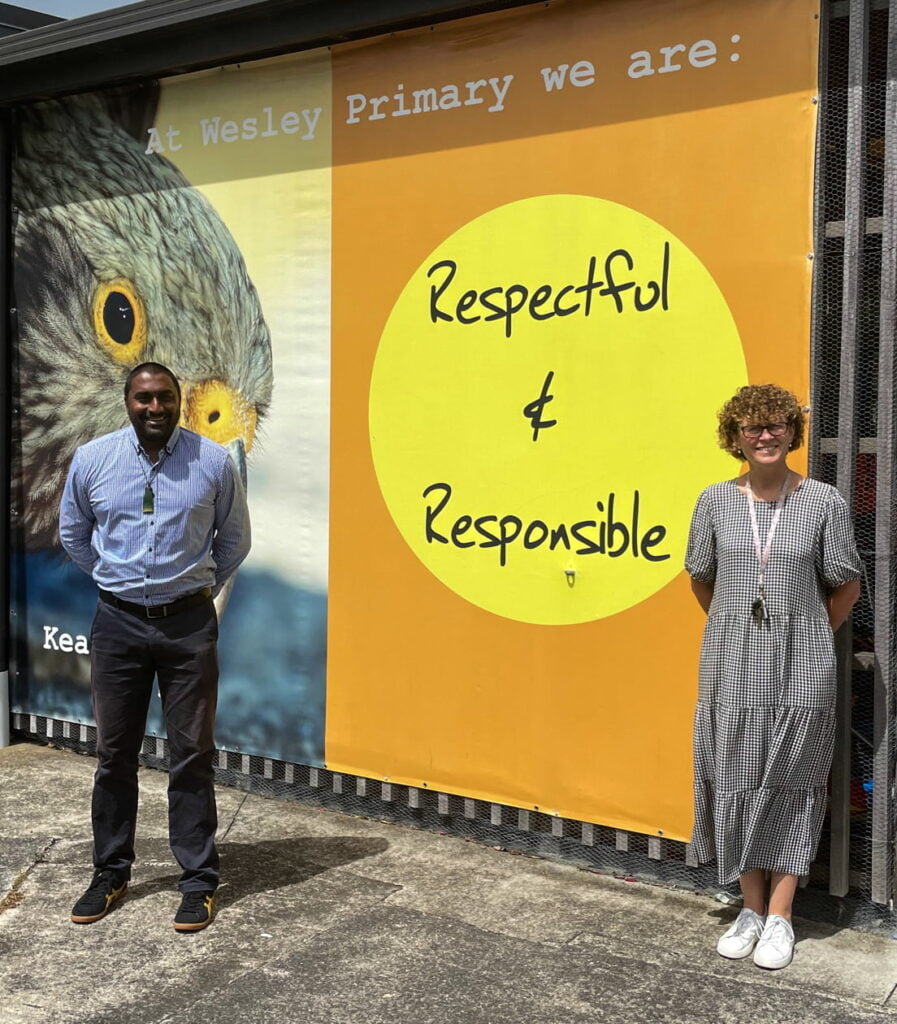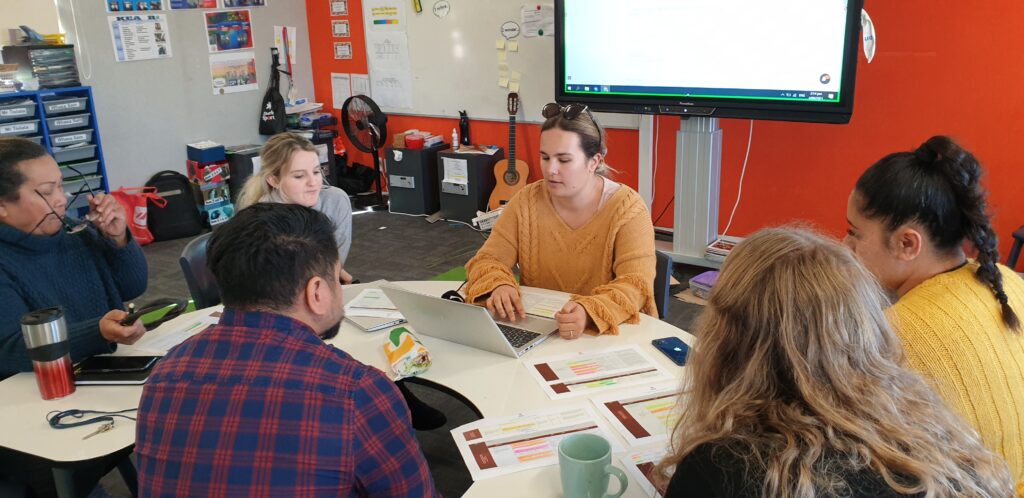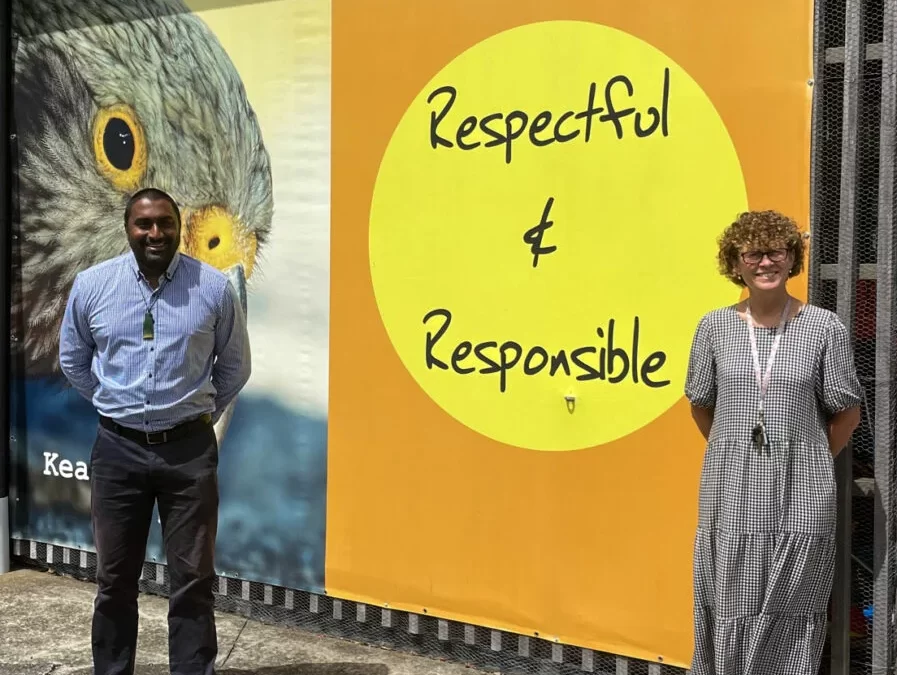We are pleased to have Wesley Primary School in New Zealand be part of the PLS in Practice journey, and this week we will hear directly from the staff about their thoughts on the PLS in Practice process and what it has enabled them to do so far.

Lou (Principal):
As a new Tumuaki – Principal, one of my first steps in learning about our new school build was to connect with our teachers, leaders and build an understanding of the common values, culture and goals. We did this through whanaungatanga – a relationship building process through shared experiences and working together which provided people with a sense of belonging and ownership. A strong element of this was our PLS process at Te Kura Tuatahi o Wēteri – Wesley Primary School which really helped us to clarify, identify and connect to our shared values and what it really means to have culturally sustaining practice. We also gained a shared understanding of our challenges coming into a new building design process too.
As a principal and one that has come into the design build process part way in the build design process, having the PLS in Practice framework really enabled me to understand what my staff thought they were doing well, what their challenges were and what we need to do as our next steps to better support our learners, staff and whanau.
A real tangible advantage was the online connect with Terry and Bhavini around the design process because it is in a prototype phase, they were really open and honest about the online tool and how it might be used in our school. I had about a 6-month lead time to better understand the Kaupapa of it but essentially going through it with my staff, I now understand them better, they can then also articulate what they need from myself and the board better. So, this process greatly improved my understanding of what good leadership looks like and also because Terry is an experienced principal who coached me through the entire process. This emerging goal helped us appoint a new coach role for our school and Sam has really taken to it, to make it sustainable, should leadership change or new teachers come on board, which is going to happen as our school grows.
Shelley (Associate Principal):
When a school moves from a traditional single cell classroom organisation to a collaborative open space environment with a new school build, it is vitally important that all staff are involved in the process. The PLS in Practice framework has given all staff many opportunities to be part of group/team discussions around the main PLS in Practice key themes.
Different perspectives have been brought to these conversations, which have been very rich and inclusive of a wide range of voices. The process had helped staff clarify their understanding of what we currently do and where we would like to go in the future. The teachers are now planning and working in a totally collaborative way, even though they are not in the new open space buildings yet. They have embraced the opportunity to try new ideas, innovate, iterate and ideate, constantly looking at what is working and what isn’t.
The team sessions have been an absolute delight to be part of as staff have been so excited to share, have their voices and ideas heard and validated, and the creativity and action/solution orientated thinking has been outstanding. The process offers the opportunity to be creative with actions for next steps, which the staff have really embraced.
As a school leader, this involvement and invested engagement from the staff, suggests that the move will be successful and a positive experience and that staff will be well prepared, ready and informed but most of all, they will have a strong sense of ownership of the spaces as they were part of the team that made decisions about what those spaces are going to look and feel like.

Sam (PLSiP Coach at school):
The start of our journey towards collaborative spaces and change process towards our new innovative learning environments has been a highlight of our year. I have been supporting all staff and their teams to identify strengths and challenges of their current learning environments and identify next steps to trial before we move into innovative learning environments. Following on from this, teams have identified explicit desired learning activities, behaviours and experiences that these spaces will enable. It has been important to bring all staff members along on the journey by integration of the approaches in preparation for change. All staff have really valued the process thus far.
Doug (NZ Project Co-Ordinator):
The Workshops in the ‘Planning Learning Spaces’ Design Framework that all staff are going through, is allowing the school to identify what activities are working well in their current environment. They will then be able to visualise how these activities may need to adapt to a larger more collaborative space in the new ILE build. They will be able to identify what these activities will look like using descriptions and pictures and be able to visualize these activities becoming a reality in the new learning zones in the within the new build.
The ability to prototype these new activities in their current environment using existing furniture and zoning has been spearheaded by the principal and his leadership team and will be immensely important once they get into their new environment and will give them the confidence, they need to succeed from day one.
Written by: Staff at Wesley Primary School

